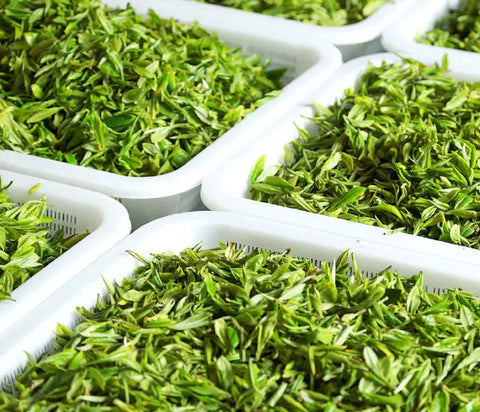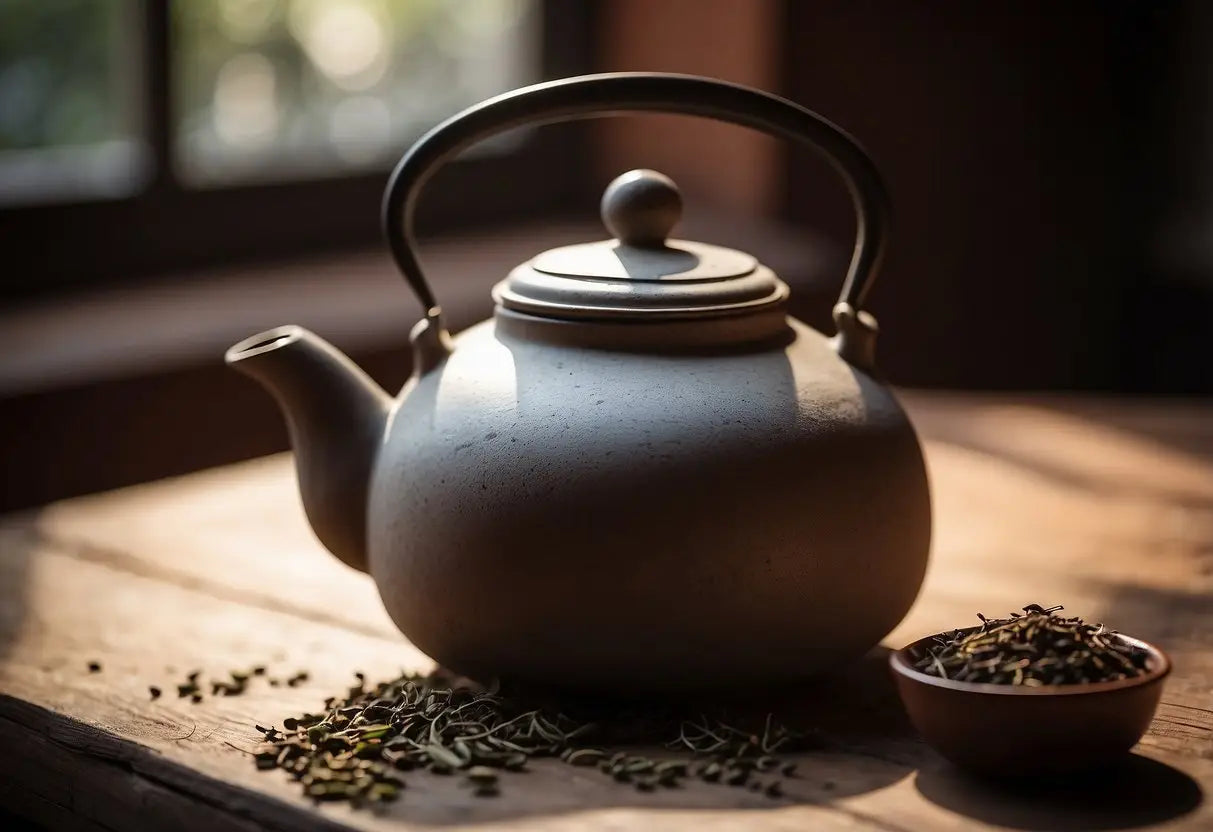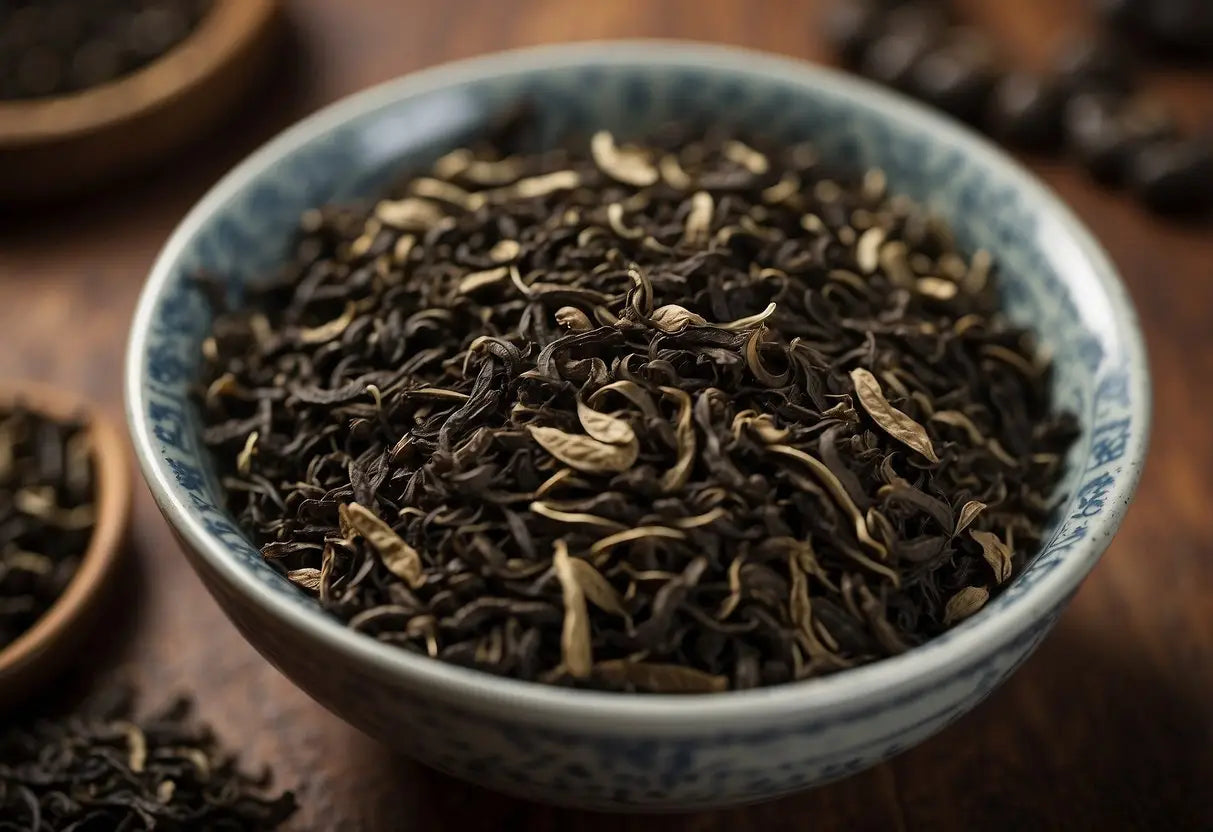How to Age Pu Erh Tea
Pu-erh tea's rich history and varied types make it unique among teas. Recognizing quality indicators is essential to fully appreciate its potential.
Origins and History
Pu-erh tea originates from Yunnan, China. Its roots trace back over a thousand years, closely tied to ancient trade routes known as the Tea Horse Road. Traditionally, it was highly valued and used as a currency in trade.
Early cultivation involved ethnic minorities cultivating wild tea trees. Over time, methods evolved to create different pu-erh styles.
Bestsellers
Types of Pu-erh Tea
There are two main types: sheng (raw) and shou (ripe). Sheng pu-erh is unprocessed and naturally ferments over time. This leads to a complex flavor profile.
Shou pu-erh undergoes an accelerated fermentation process, creating a darker, richer tea. Both types offer unique aging potential, with sheng being more prized for long-term aging.
Quality Indicators
Identifying quality in pu-erh tea involves examining several factors. Appearance: High-quality pu-erh has a uniform color and tightly packed leaves. Aroma: A good pu-erh emits a pleasant, earthy scent.
Taste: The flavor should be balanced and without harsh astringency. Age: Older pu-erh often commands a higher value due to its mature flavor development and complexity.
Essentials of Aging Pu-erh Tea

Aging Pu-erh tea requires precise conditions and understanding of the process to develop its distinct flavors and characteristics. Focus on ideal storage conditions and how the aging process works.
Ideal Storage Conditions
Proper storage is essential for aging Pu-erh tea. The environment should be cool, dark, and well-ventilated. Aim for temperatures between 68-77°F (20-25°C) and relative humidity levels between 60-70%. Avoid using airtight containers. Instead, opt for materials like breathable clay or paper wrappers to allow the tea to "breathe."
Keep the tea away from strong odors and sunlight, as these can degrade its quality. Shelves should be stable and away from damp floors or walls. Regularly check on your stored tea to ensure the environment remains consistent.
Aging Process Explained
The aging of Pu-erh tea involves microbial fermentation, which breaks down the tea leaves' compounds over time. This process enhances the tea's flavor, aroma, and texture. Natural aging can take several years or even decades, depending on storage conditions and the desired final product.
Regularly sample small amounts during the aging process to monitor changes. Notably, the tea's color should deepen, and its taste should become smoother and more complex. It's a gradual change influenced by temperature, humidity, and air flow. Proper aging develops desirable qualities such as richness and depth.
Setting Up Your Aging Space

To age Pu-erh tea effectively, consider the storage location and environmental factors. These elements significantly impact the tea’s aging process.
Lao Ban Zhang
Choosing a Storage Location
Select a storage location that maintains stable conditions. Basements, closets, and cabinets are suitable options. Ensure the space is away from strong odors, as Pu-erh tea can absorb smells easily. Ventilation is crucial to prevent mold growth, so avoid sealed containers or airtight spaces.
Keep the tea free from direct sunlight which can degrade the quality. Use shelves or a dedicated tea storage cabinet, ensuring airflow around the tea. Consider the proximity to other stored items to avoid contamination from strong-smelling substances.
Controlling Environmental Factors
Humidity and temperature are pivotal in aging Pu-erh tea. Ideal humidity levels range from 60% to 70%. Use a hygrometer to monitor and a humidifier or dehumidifier to adjust accordingly. Temperatures between 20°C to 30°C are optimal. Avoid extreme fluctuations that can adversely affect the tea’s aging.
Maintain good air circulation to prevent stagnation and mold. Regularly check for pests and manage them promptly. Clean the storage area periodically to ensure a sanitary environment. Small fans can help circulate air without disrupting the tea’s environment.
By carefully selecting and maintaining your aging space, you ensure the quality and flavor development of your Pu-erh tea.
Maintenance of Aging Conditions

Properly aging Pu Erh tea requires meticulous attention to factors such as humidity, temperature, and regular inspection to ensure optimal conditions.
Monitoring Humidity and Temperature
Controlling humidity and temperature is crucial for aging Pu Erh tea.
Keep humidity levels between 60-75%. Use a hygrometer to monitor these levels continuously. Humidity levels below 60% can dry out the tea, while levels above 75% may promote mold growth.
Temperature should be stable, between 20-30°C (68-86°F). Significant fluctuations can disrupt the aging process. Consider using a thermometer to maintain consistency. Avoid direct sunlight as it can raise temperatures and impact tea quality.
Regular Inspection
Inspecting your Pu Erh tea regularly ensures it remains in good condition.
Check for mold every few weeks. Look for white or greenish spots, which indicate spoilage. Remove any moldy pieces immediately.
Smell the tea. A pleasant, earthy aroma is ideal, while off or sour smells suggest problems. Turn the tea periodically to ensure even exposure to air and prevent staleness.
Use airtight storage containers, but ventilate them occasionally to prevent a musty environment. Logging inspection results can help track changes and make necessary adjustments promptly.
Common Pitfalls in Aging

When aging Pu-erh tea, it is crucial to be aware of potential pitfalls that can ruin your efforts. Contamination and mold are primary concerns that need addressing.
Avoiding Contamination
Contamination can alter the flavor profile and quality of your Pu-erh tea. Store your tea in a well-ventilated area, away from strong odors. Use dedicated containers, as certain plastics and metals can impart unwanted tastes and chemical residues.
Ensure storage areas are clean and free from pests. Avoid direct sunlight and excessive moisture, which can accelerate spoilage. Maintain a steady temperature to prevent the tea from undergoing undesirable chemical changes.
Regularly inspect your storage conditions and the tea itself. Any sign of contamination necessitates immediate action to prevent further damage.
Mitigating Mold and Odor Risks
Mold is a significant risk to aging Pu-erh tea. To avoid mold growth, control humidity levels. Keep relative humidity around 60-70%. Use a hygrometer to monitor humidity and prevent excess moisture.
Proper airflow is essential. Ensure that your storage space allows for air circulation to avoid stale and musty environments. Avoid storing Pu-erh near items with strong odors, such as cleaning agents or scented products.
If mold does develop, isolate the affected tea immediately. Clean the storage area thoroughly, and consider using desiccants or silica gel packs to maintain appropriate humidity levels.
← Older post Newer post →











